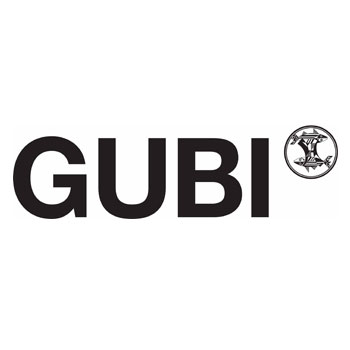You are in a different country
Do you want to continue browsing the website
or change your country?
Your dream house is one step away from you.
Subscribe to our newsletter and get 10% off orders of at least £100,00!
Enjoy it and don’t miss out on our offers and updates.











GUBI
For Gubi, design is all about discovering gems and following your instincts. It involves travelling, searching and finding long-lost remnants from the past as well as contemporary, cutting-edge designs from new artists on the horizon. The result is an eclectic, intercontinental collection that blurs the lines between the past and the future.
Gubi
Gubi is a family-run company founded in 1967 by Lisbeth and Gubi Olsen. In 2001 their son Jacob Gubi took over the management of the company and moved the focus of the brand from the private to the contract market. The first Gubi retail store was opened in the fall of 2014 in the center of Copenhagen, Denmark.
The Research
It's not easy to describe in a few words the brand Gubi, especially given the long history of this Danish brand. In fact, Gubi is established and constantly evolving design firm. Today, thanks to the new direction indicated by the young Jacob, the brand explicitly aims at finding a balance between the forgotten icons of the past and the icons of the future. Based in Copenhagen, Gubi tries to track designers willing to perform the daunting task of going to "hunt" treasures, always identifying new trends, patterns and ways of expression. This means looking for traces and remains of objects produced in the past which can become seeds of innovation and trends for the future. Courage, curiosity and intuition are the key components of a complex design company which intends to take a journey through time and space by offering products that can be placed anywhere at any time. The entire collection of Gubi revolves around the symbolism of the journey and the wandering traveller. Gubi now is an important name on the international design scene for its dynamic and instinctive energy. Jump in time and ride towards the future are continuous movements that give life to contemporary and ground-breaking achievements, but at the same time respectful of ancient stylistic traditions. The result is an intercontinental eclectic collection, which aims to soften space and time boundaries.
The Drawings
Gubi has a wide range of designs that are characterized by being extremely accurate from a technical point of view, and able to stimulate thought and reflection. Gubi furnishings and accessories present simple forms, realized through the use of original materials and innovative techniques. The aesthetic component of all the items by Gubi is imbued with a beauty that attracts lovers of taste and interior designers from all around the world.
Lost and found elements are all pieces of the collections, which led to the re-edition of projects dating back to the period that goes from the ‘30s to the ‘70s. The designers who work with Gubi are characterized by their internationality: artists, sculptors, designers and architects come from France, Italy, England, Spain, Sweden, Denmark, Hungary, Germany and Japan. Many of the designers are characters made famous by the exhibition of their works in major art museums, including the MoMA in New York, the Victoria & Albert Museum, the Design Museum in London, the National Museum in Stockholm and the Arctic Museum in Finland. Each piece is unique and has a long story to tell, because it is a modern re-elaboration of the same shapes that have fascinated our ancestors many years ago. In this way, the past becomes present and the present is already future. A perfect example of this revolutionary idea is Bestlite, a collection of lamps that draw their inspiration from the newly developed model designed by Bauhaus in the 20th century. Gubi is proud to point out that Bestlite has been in continuous production since 1930, when it was designed for the first time by the British designer Robert Dudley Best, and apparently also Winston Churchill owned a copy of it. Eighty years later, the Bestlite design stays close to its industrial roots and true to its original design, thanks to the revival by Gubi. Bestlite, as a global icon, is displayed in the permanent collections of both the Victoria & Albert Museum and the Design Museum of London. The Bestlite lamp has become for Gubi a symbol of the rebirth of ancient beauties, perfect combination of tradition and innovation. Starting from this first model, Gubi today offers a collection of 13 pieces, all different from each other, which re-launched the Bestlite icon worldwide. When you look at the lamp, you immediately notice how difficult it is to say at what period it belongs, since it seems timeless for the forms and the extremely minimalist and classic details that, for this reason, never bore.
Furthermore, due to its characteristics, Bestlite perfectly matches any type of setting, classic, contemporary or hyper-modern.
From the raw diamond to the idea
The ability to recognize what Gubi calls a "raw diamond" and to shape it with original ideas and inspirations is a project that aims to enhance the "beauty that works." Creative collaborations with emerging designers have allowed a further leap forward in the development of the company, as new dissident voices question old assumptions about the form and function of furniture. These are people who have the courage to take the less travelled road and venture into the unknown. Of course, whenever you draw the lines of a new design you always take a risk: a designer can create a project that at first appears not commercial, but sometimes it's worth it. A perfect example of it is the Gubi Chair of the eponymous line, created in collaboration with Komplot design. It is a brave piece, since it is the first chair in 3D veneer ever made. This object of pure design has received numerous awards and was chosen by the MoMA for its permanent collection. Another example is the Masculo Chair by GamFratesi, an awarded design duo consisting of two women, one Danish and one Italian. These designers have received worldwide recognition for their iconic and informal style. The Collection Masculo by Gubi is not recognizable as a real classic, since it does not follow a traditional geometric shape, but it presents quite asymmetrical forms. On one hand it emerges the sculptural element typical of Italian art, while on the other there is the Danish component expressed in hand-making, attention to detail and definition of the lines: a synergy that has been successful.
Despite Gubi is a company deeply rooted in Scandinavia, its clientele is made of design enthusiasts from all over the world. Visiting the Gubi studies is a unique experience: the showroom in Copenhagen is a loft which covers a surface of 2,000 square meters, a converted former tobacco factory where you can see chairs, sofas, lamps, tables and many other furnishings ready to appear on international fashion and design magazines.




